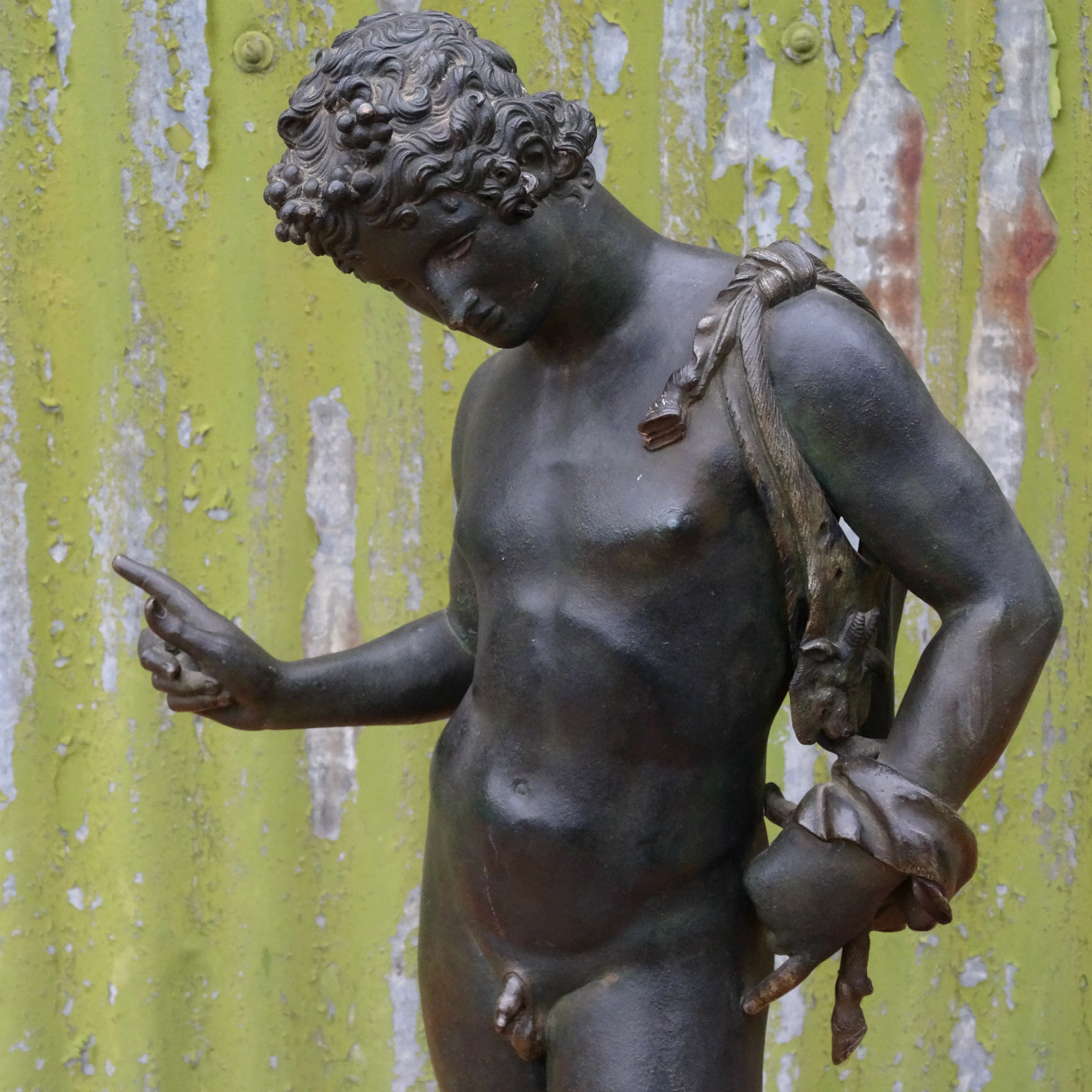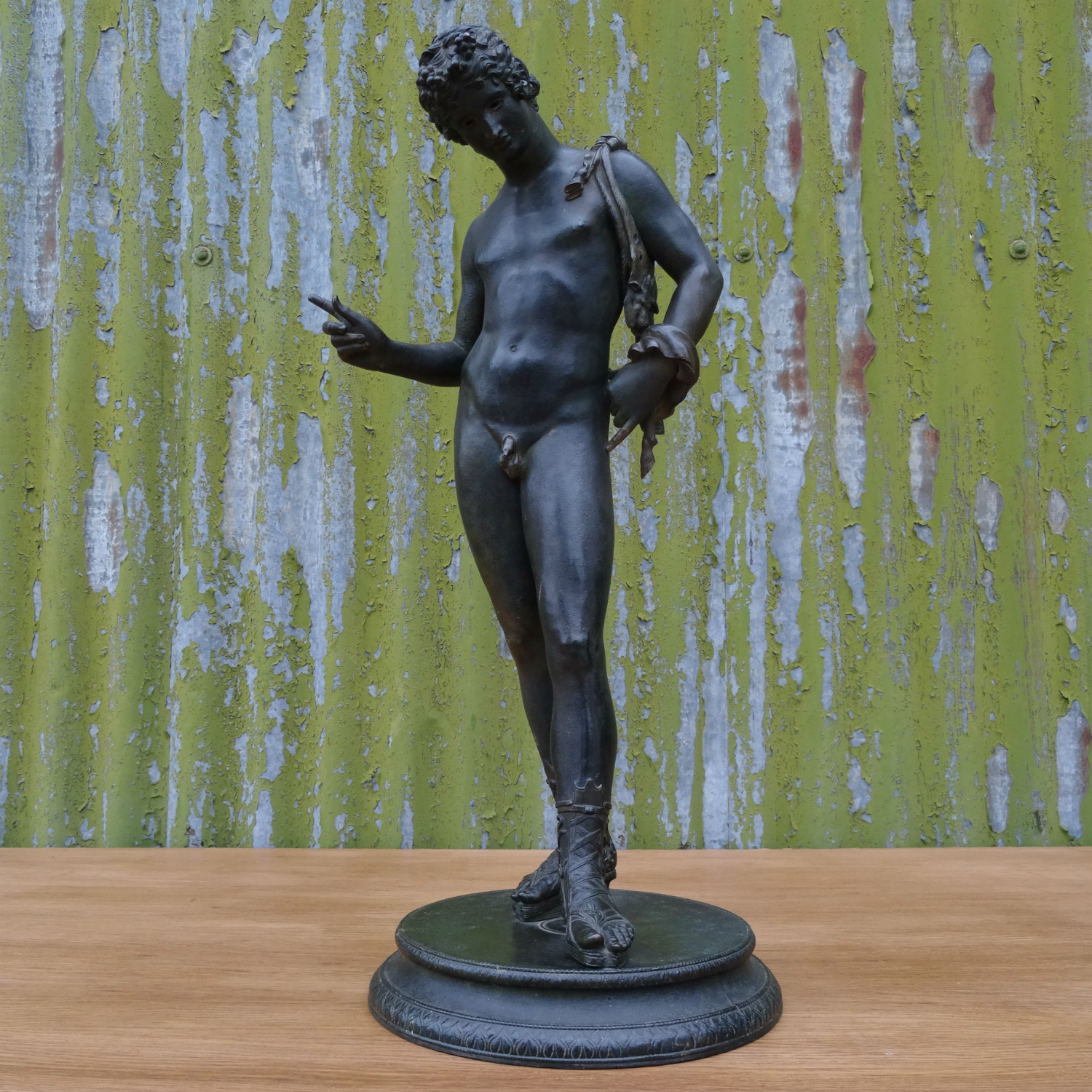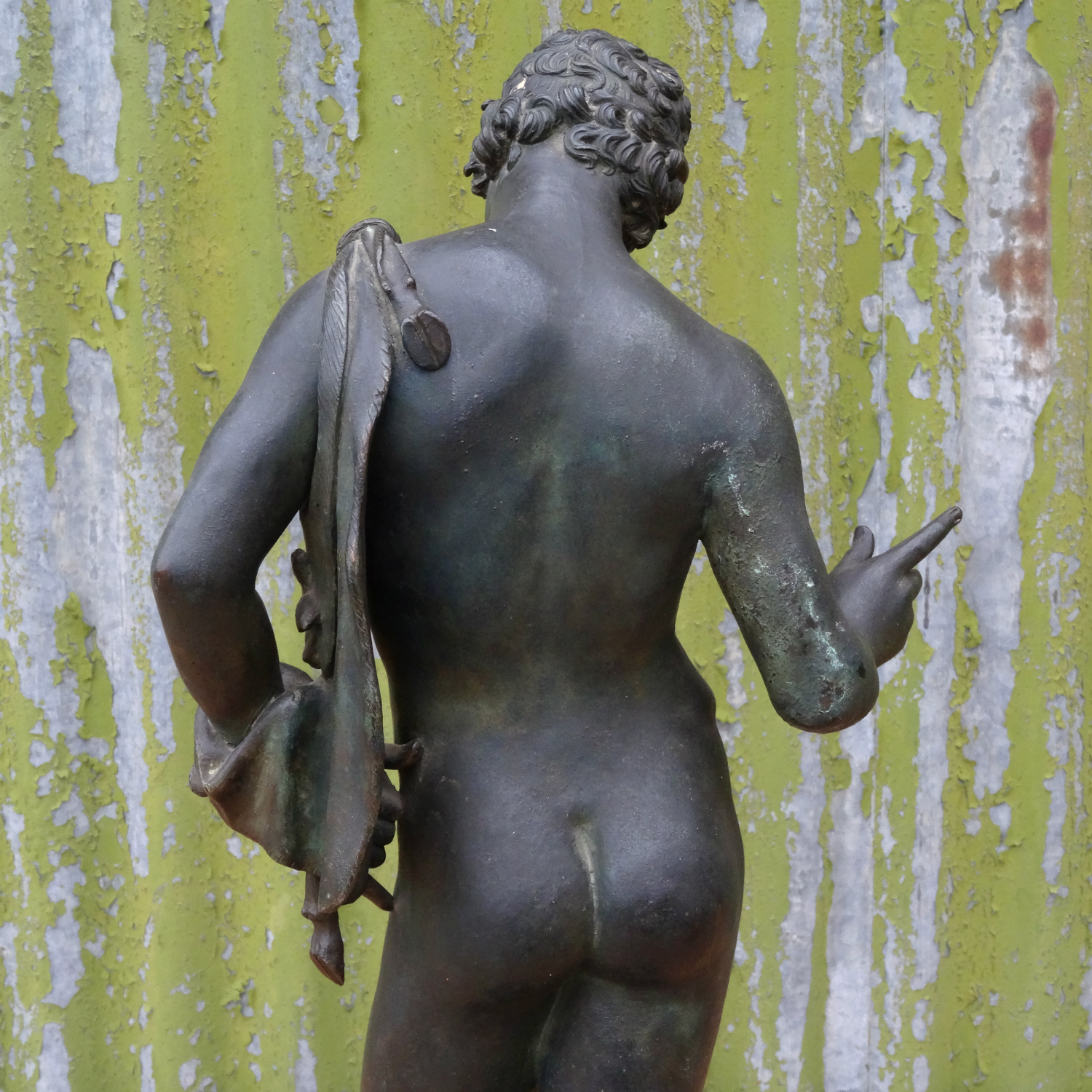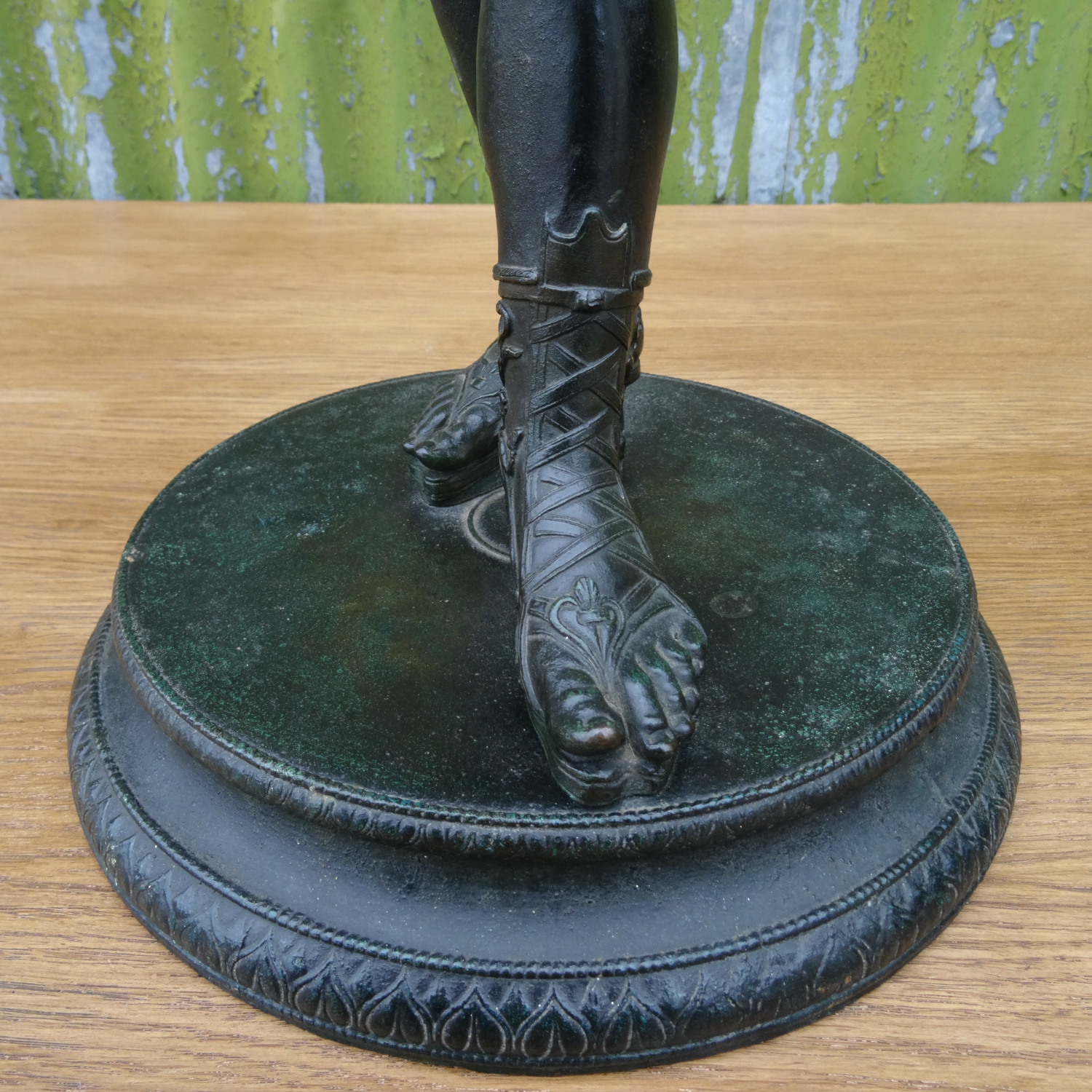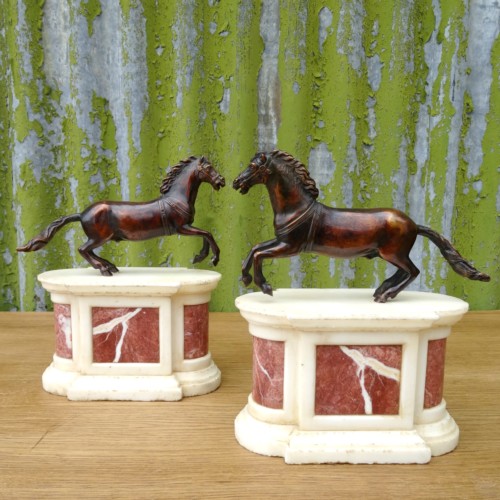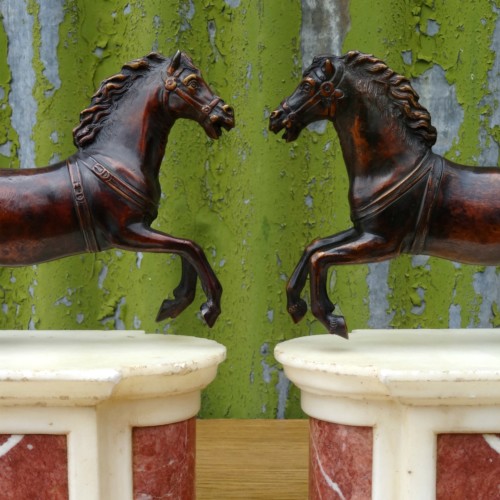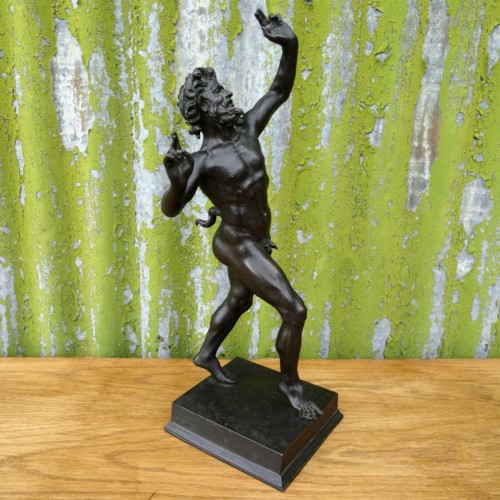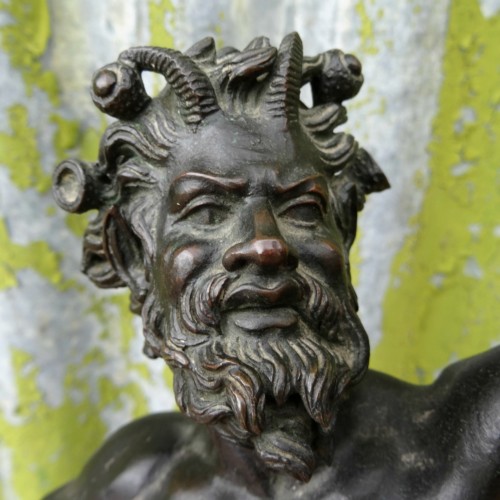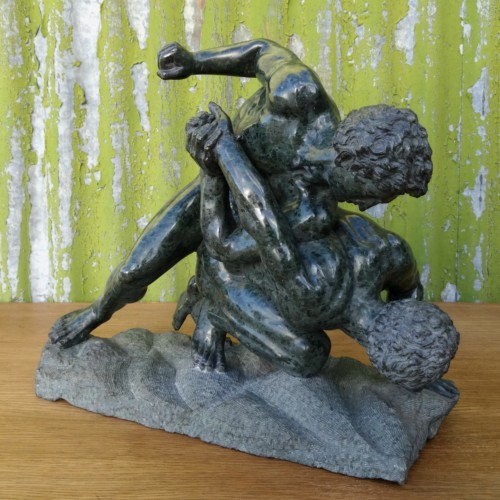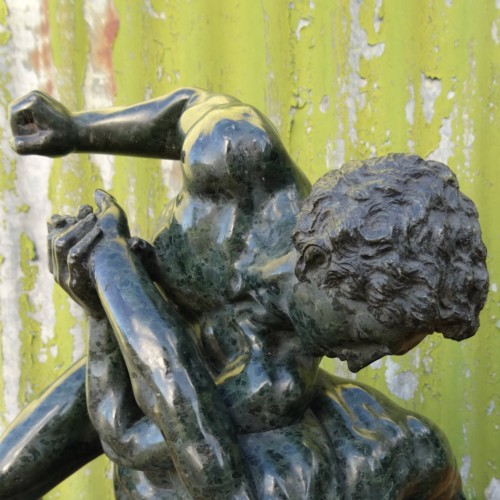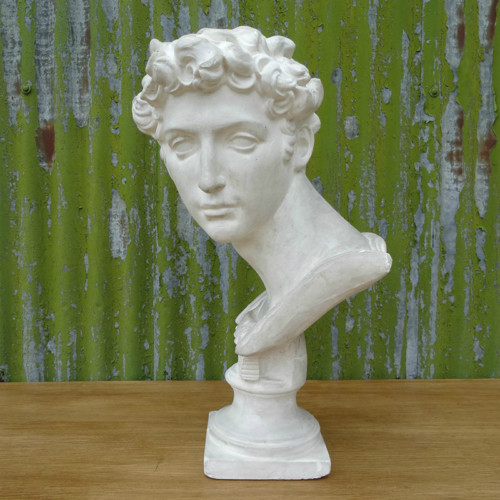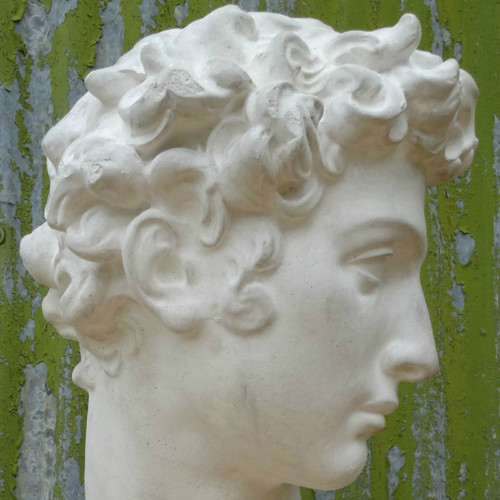A large Grand Tour Neapolitan patinated bronze Narcissus, after the Antique, attributed to the Chiurazzi foundry, Naples, Italy, circa 1880, on a circular base, in good untouched condition with exceptional colour and surface, the best example I’ve ever seen!
Large Bronze Narcissus
Dimensions: 62cm high, 25cm deep, 28cm wide
Footnote
In late Greek legend, Narcissus was a beautiful youth who fell in love with his own reflection in a pool. He ignored the devotions on Echo, who pined and died when her love was unrequited. At his own death, Narcissus was turned into the flower that bears his name.
The Narcissus, held at the Museo Nazionale, Naples, was discovered in Pompeii as recently as 1862 but was very quickly acclaimed as a masterpiece. ‘It was the last antique statue to be discovered in Italy which enjoyed enormous fame…’. Taste and the Antique, Haskell (F.). By the turn of the century, revised opinion suggested that the bronze represented Dionysus, but it is still generally known as the Narcissus.
The Grand Tour of the late 17th, 18th and 19th centuries saw many upper class, wealthy and aristocratic gentlemen travel to Italy and Europe, particularly Rome, Venice and Florence, for pleasure, education and inspiration. This afforded them the opportunity to view important classical and Renaissance works of art and architecture.
The term ‘Grand Tour’ was coined by the Catholic priest and travel writer Richard Lassels (circa 1603-68), who used it in his influential guidebook The Voyage of Italy, published in 1670, to describe young lords travelling abroad to learn about art, architecture and antiquity.
Robert Adam wrote of Rome in 1755, ‘Rome is the most glorious place in the universal world. A grandeur and tranquillity reigns in it, everywhere noble and striking remains of antiquity appear in it, which are so many that one who has spent a dozen years in seeing is still surprised with something new…’
Many Grand tourists collected souvenirs in the form of bronze and marble models of sculpture and architecture, and formed collections of Grand Tour objects for their English country houses, most notably Chatsworth House.

